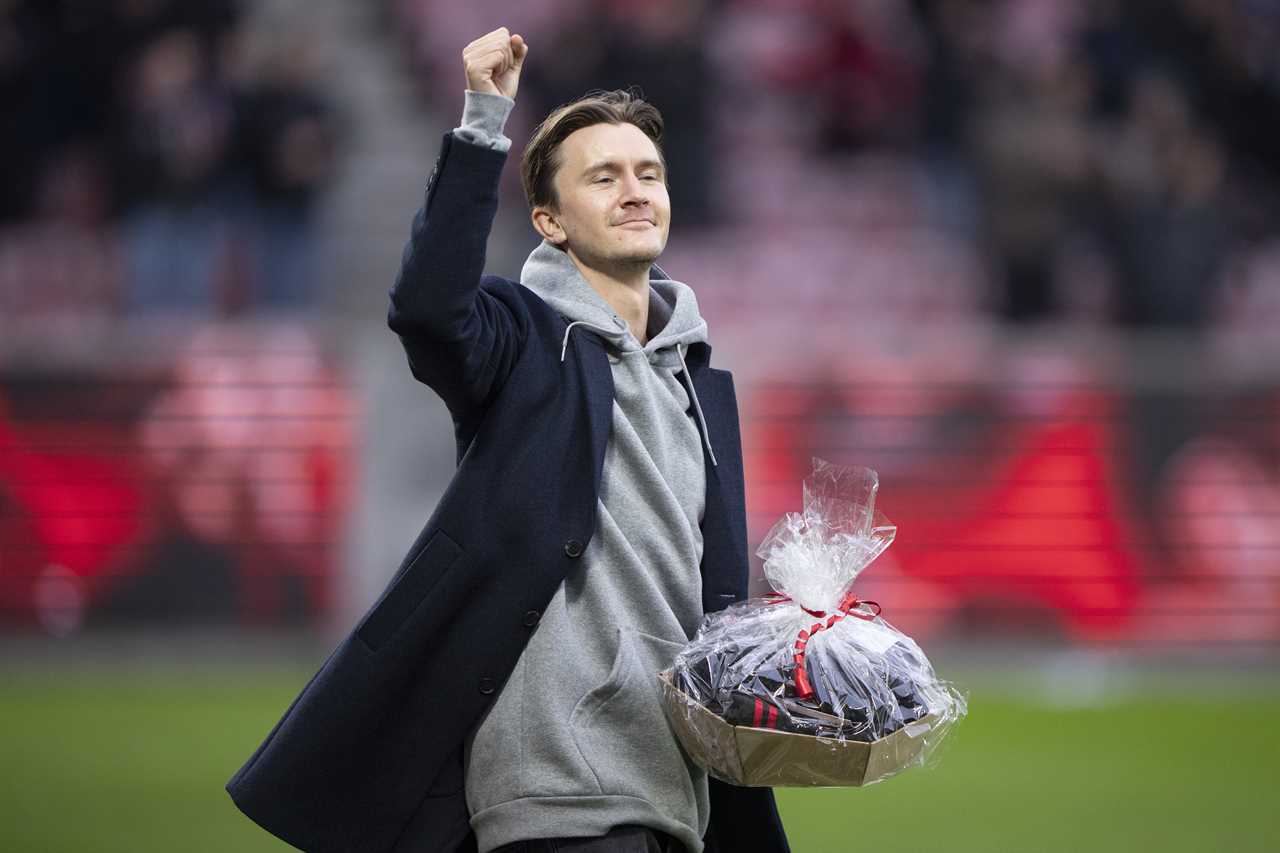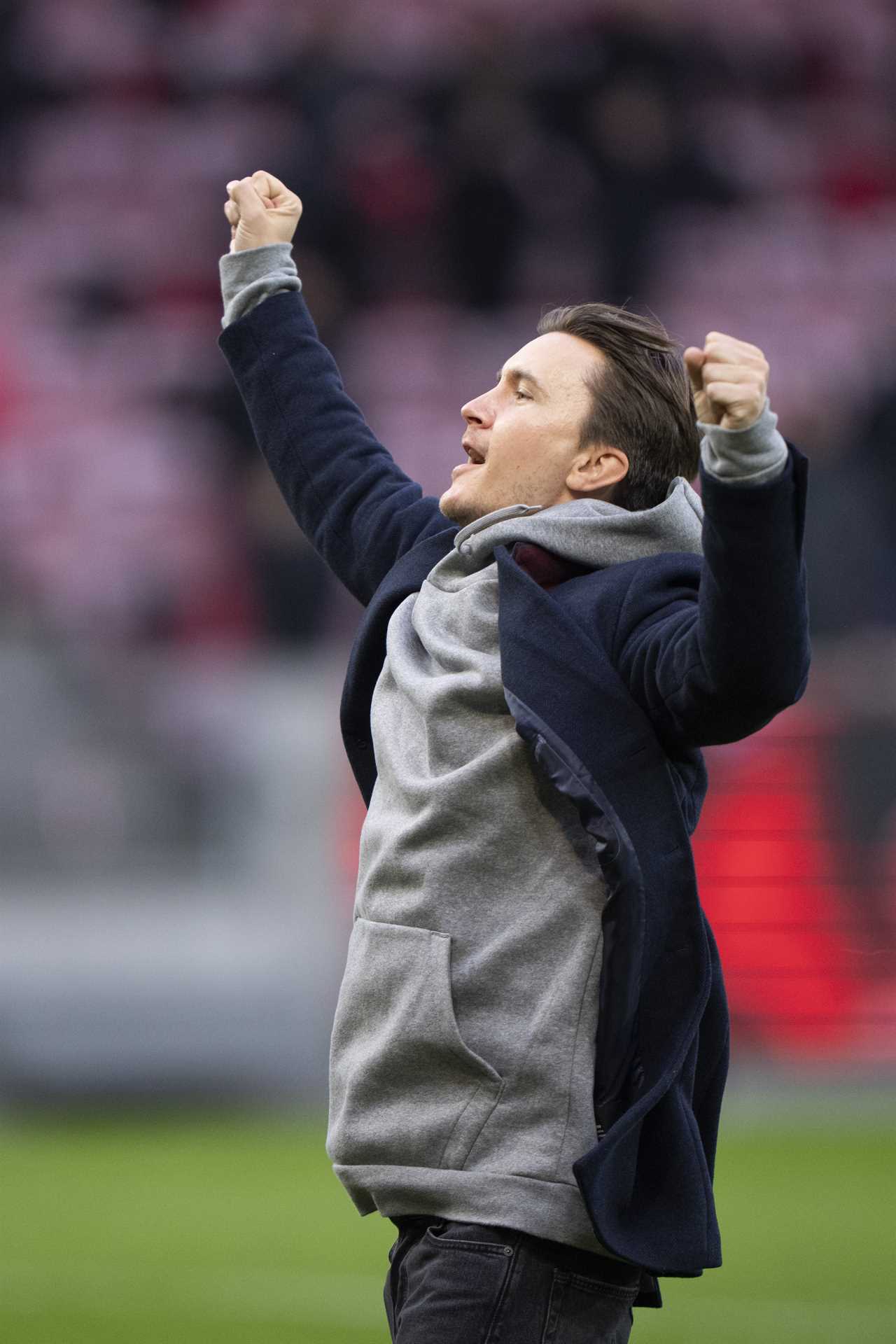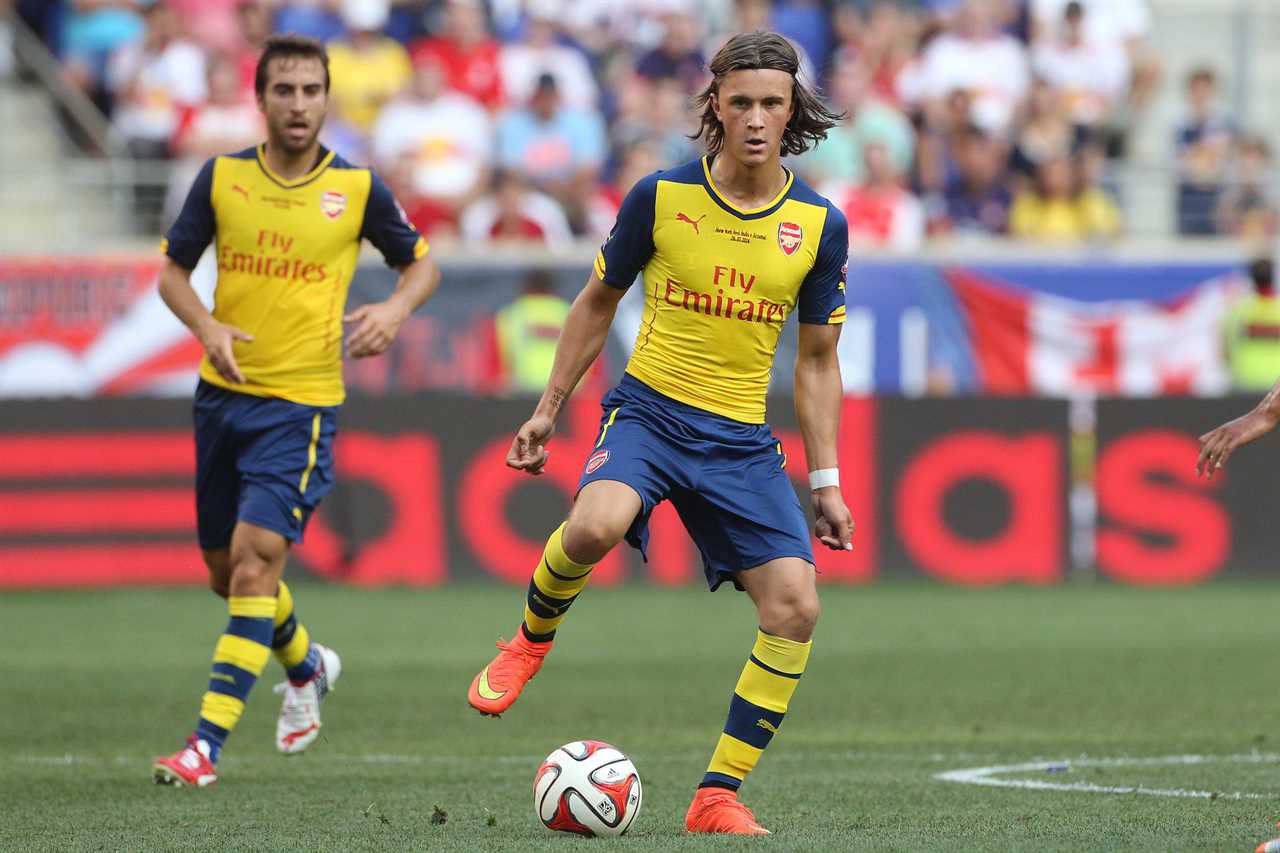
Unexpected Health Challenge Forces Career Decision
Kris Olsson, the 29-year-old former Arsenal midfielder, has made the difficult decision to terminate his contract with Danish club Midtjylland following a diagnosis of a rare brain condition. The revelation comes after Olsson suffered severe blood clots in his brain last February, necessitating intensive hospital care.
Heartfelt Farewell at Midtjylland
Olsson received an emotional sendoff during Midtjylland’s recent home fixture against Brondby. The midfielder, who has been sidelined since his diagnosis, was visibly moved as he bid farewell to the supporters and teammates who have supported him through his health struggles.
Returning Home for Family Support
After a year spent rebuilding his fitness and resilience, Olsson is now focusing on making a full recovery with the support of his family in Norrkoping. By returning to his hometown, he aims to secure regular first-team football with local club IFK Norrkoping, where he hopes to regain his form and continue his professional career.
Club Officials Praise Olsson’s Contribution
Kristian Bach Bak, Midtjylland’s deputy football director, expressed his admiration for Olsson, highlighting his technical skills and the positive influence he had both on and off the pitch. “Kristoffer has been a fantastic footballer and an equally great person,” Bach Bak stated. “He played a crucial role in our team, not just with his eye for the game, but also by bringing people together.”

Peter Sand, the club’s football director, reflected on a memorable moment Olsson created before a key match. “We will never forget the speech he gave. It was a powerful moment that united both players and staff. Even when he wasn’t physically present on the pitch, his spirit and determination were felt by everyone.”
Olsson’s Gratitude and Future Aspirations
In his farewell remarks, Olsson expressed deep gratitude for the support he received from Midtjylland. “I am immensely thankful for the warmth, care, and respect I’ve been shown here,” he said. “When I was diagnosed, it felt overwhelming, but being surrounded by a community that understands and supports me has been invaluable.”
Olsson remains passionate about football and is eager to return to the sport he loves. “I still dream of being a footballer,” he shared. “Training fully and contributing to a team gives me purpose. Being back in Norrkoping, close to my family and friends, feels right and gives me the motivation to keep pushing forward.”
A Diverse Football Journey
Olsson’s career has seen him traverse multiple countries and leagues. He spent three years at Arsenal between 2011 and 2014, though he made only one senior appearance for the Gunners. Following his time in England, Olsson joined Midtjylland for three years before returning to the club in 2023.

His journey also includes stints in Sweden, Russia, and Belgium, showcasing his adaptability and commitment to the sport. Throughout his career, Olsson has achieved significant success, securing two Superliga titles with Midtjylland and a league championship with AIK in Sweden.
Looking Ahead
As Kris Olsson transitions to playing for IFK Norrkoping, fans and colleagues alike wish him well in his quest for recovery and sporting success. His courage and determination serve as an inspiration to many, both within and outside the football community.
Frequently Asked Questions
What are the factors I should consider when buying a soccer?
Consider the size of the ball, its material, and its construction. Standard size for adults and players above the age of 12, is 5. Younger players should use smaller sizes appropriate for their age. The material should be suited for the playing environment - leather for natural grass and synthetic materials for rougher surfaces. Thermal-bonded soccer balls offer superior waterproofing, shape retention and durability compared to traditional stitched versions. Durability is also an important characteristic to check.
Can the choice of socks impact a football player's performance?
Absolutely. Football socks have been designed to protect and support a player’s feet when they are playing intensely. They prevent blisters, keep the shinguards firmly in place, and cushion the feet. Good football socks will improve a players comfort which will in turn affect their performance.
How can I be sure that my football shoes are fitted correctly?
If you want to ensure that your football boot fits properly, it should not be too tight. It should allow some movement of the foot without causing the boot to slip. The space between your toes, and the front of your boot should be approximately a thumb-width to prevent the toes from being crammed in when running or kicking. You should also consider your foot width and choose a boot that fits narrow or wide feet. Try on your boots with socks, and make sure they are fully laced.
What are the best goalkeeper gloves?
Goalkeeper gloves that have a latex-coated palm provide the best grip for different playing conditions. Latex thickness and density can be adjusted to balance durability and grip. Gloves with finger protection systems, such as spines or stiffening material, can also prevent hyperextension injuries. To allow goalkeepers to perform to their full potential, gloves need to be comfortable and well-fitted.
How do I choose football boots according to my playing surface?
You should choose the correct football boots depending on the type and surface of the pitch you will be playing. The metal studs on cleats (FG-firm ground) provide stability and traction for natural grass. For artificial turf, boots that have a sole with flat or numerous rubber studs will offer a better grip. Indoor courts require rubber soles with non-marking properties to allow for adequate movement while preventing damage to the court surface.
Statistics
- Goalkeeper gloves with advanced grip technology have been adopted by 85% of professional goalkeepers in top leagues around the world.
- Globally, the demand for lightweight football cleats has risen by about 30% in the past decade, reflecting changes in player preferences and playing styles.
- Compression garments are used by about 50% of professional football players during training sessions for muscle support and injury prevention.
- Data shows that thermo-bonded footballs, known for their consistent performance, are preferred by 65% of professional football clubs for matches.
- Around 25% of youth football players have reported using equipment that is either outdated or not suited to their position on the field.
External Links
How To
How To Fit a Football Helmet Correctly
A football helmet must be fitted correctly to protect the player. Assure that the jawpads are snug against cheeks. The chin band should be in the middle and tightened until no more than a finger can be squeezed between it and your chin. Always check for stability; the helmet should not rotate on the head or slide down over the eyes when jostled. If you want to fit your helmet correctly, it is best to get professional assistance.
Did you miss our previous article...
https://sportingexcitement.com/premier-league/chelseas-cole-palmer-faces-tough-times-what-went-wrong-and-the-path-forward
 CricketBoxingFormula 1GolfHorse RacingPremier LeagueTennisPrivacy PolicyTerms And Conditions
CricketBoxingFormula 1GolfHorse RacingPremier LeagueTennisPrivacy PolicyTerms And Conditions
